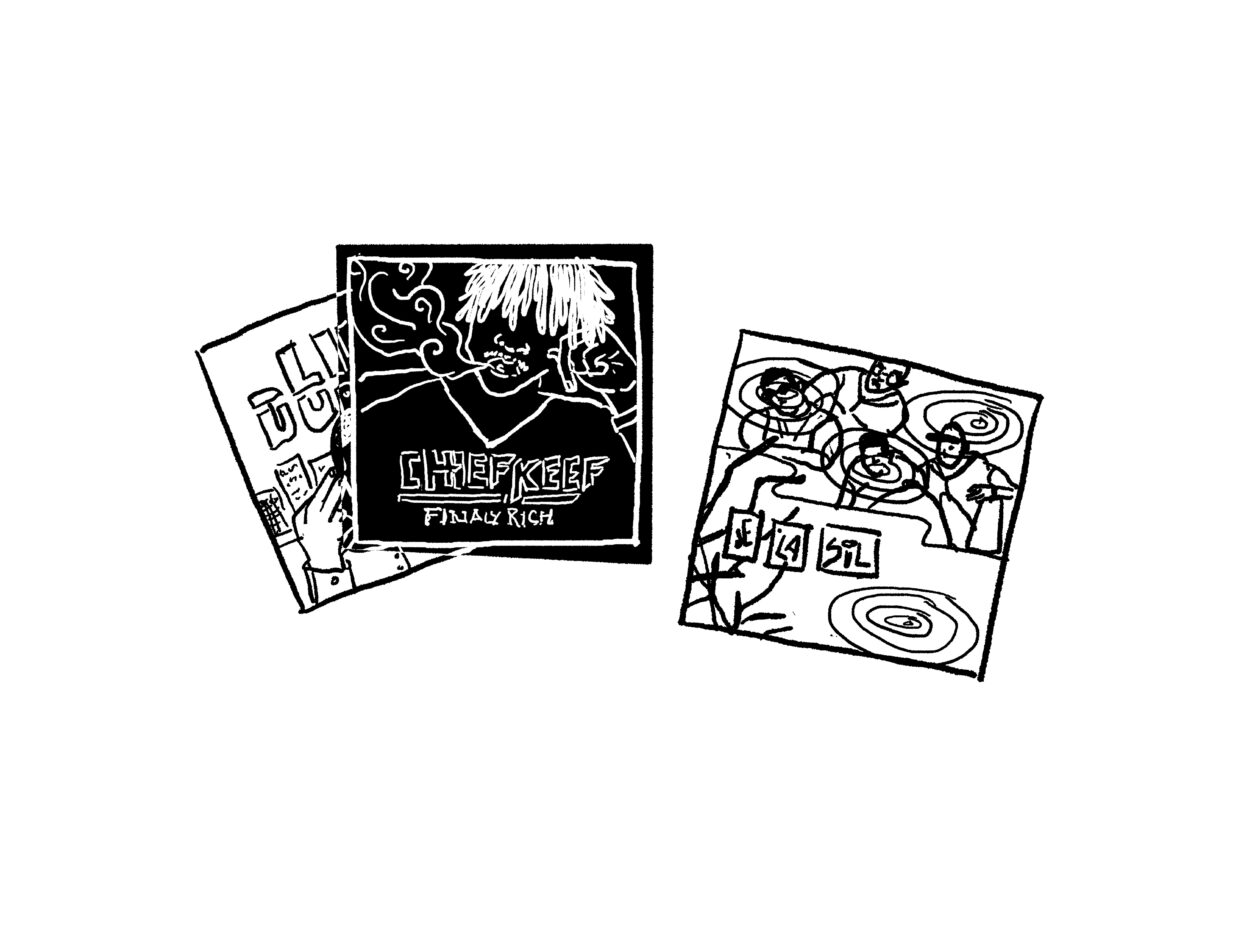
Image by Ivy Sanders Schneider

Image by Ivy Sanders Schneider
In hip-hop, the most powerful voices also tend to be master self-marketers, so when I hear “avant-garde” thrown around in the industry, I get ready to be sold some bullshit. I’ve come to associate the term with a brand: post-Yeezus Kanye West, when white acceptance became his priority, or the Griselda rapper Westside Gunn’s goes-to-a-museum-once music, which equates referencing the “Salvator Mundi” to high art.
Even though the avant-garde label can be superficial, rap itself has always been a fundamentally experimental genre. As hip-hop scribe Jeff Chang once wrote, rap is “the most avant of pop’s garde.” Rap history is filled with artists who have deconstructed the demands of the genre in which they work, including De La Soul, whose intentionally disorienting album Buhloone Mindstate refuses replication, and Danny Brown, whose cynical dramedies typically express exasperation at the limits put on rappers. “Say it ain’t about the bars, ’cause it’s all about the brand,” he raps on “SCARING THE HOES.”
Rap’s most disruptive figures have long repped local scenes. One of the last subgenres to come with any real bite arrived, unsurprisingly, before Spotify and Apple Music started turning even the most knotty groups into trends ripe for white exploitation. Drill music, led by Chicago’s youth, was built organically and independently in the early 2010s. Drill is an unnerving genre — early deaths and jail sentences have haunted the movement, and its blunt depictions of violence have sent media and local government officials into pearl-clutching panics. But by rapping about their neighborhoods, artists like Chief Keef and Lil Durk were also exposing — if indirectly — the government-sponsored corruption and segregation that shaped where and how they grew up. In a way, what made the first wave of drill so revolutionary is that its members didn’t give a fuck about the outrage they were inciting. While politicians like Rahm Emanuel — who once justified shutting down a hologram Keef performance in Chicago by saying his music “promotes violence” — pretended to care about the welfare of the city’s black kids, it seemed clear that rappers’ perspectives weren’t their priority.
In 2012, when he was sixteen, Chief Keef signed a six-million-dollar deal with Interscope and, by the end of that year, released his relatively polished debut album, Finally Rich. It was considered a failure for selling only 50,000 copies in its first week, and interest from executives and mainstream critics waned. Drill was labeled a fad. Interscope dropped Chief Keef in 2014, and, left with a bad taste in his mouth from the profit-obsessed industry — or as he would say, the “WhiteHonkies!” — he went on a mixtape run, spinning strands of drill’s sound in weird and uncompromising directions. It was true outlaw music: after being pushed out of Chicago (literally), he landed in a more explorative creative space that, ironically, has since been mimicked and watered down by many conventional rappers.
If Finally Rich had been considered a success — if streaming had been widespread at the time — I wonder if Keef would have followed it with a bunch of samey sequels instead of reenvisioning what drill could be through boundary-pushing tapes like Back from the Dead 2 and Almighty DP. As music discovery and contextualization become the job of algorithms rather than of humans, promising, disruptive rap movements are becoming more vulnerable to the whims of the industry machine. Those scenes can still churn out good music (see: Pop Smoke), but they are often homogenized before they ever have the chance to get to thoroughly unusual places. RapCaviar, Spotify’s most powerful rap playlist, is now a Hulu documentary series, retelling the story of the genre through stats. It wasn’t necessarily preferable for out-of-touch label executives to determine rap’s mainstream winners, but the billionaire-backed algorithms that have replaced them ensure that any inkling of innovation is instantly diluted to better appeal to the masses.
Truly out-there music — experiments that don’t cater to a mega-company’s analytics — is pushed further to the margins in favor of catchalls that are easier to categorize. Florida’s fast music remixes, proceeding at bpm-specific warp speed, are written out of the phenomenon of viral sped-up songs on TikTok. Jersey and Philly’s club-rap sounds are watered down by popular artists like Lil Uzi Vert and NLE Choppa as they search for a new trend to absorb. Drill’s Chicago roots are always at risk of being forgotten as similar scenes in the U.K. and New York capture labels’ attention. As for “avant-garde” rap — that idea seems destined to be repackaged as an official Spotify playlist.
Alphonse Pierre is a music and cultural critic. He lives in New York.